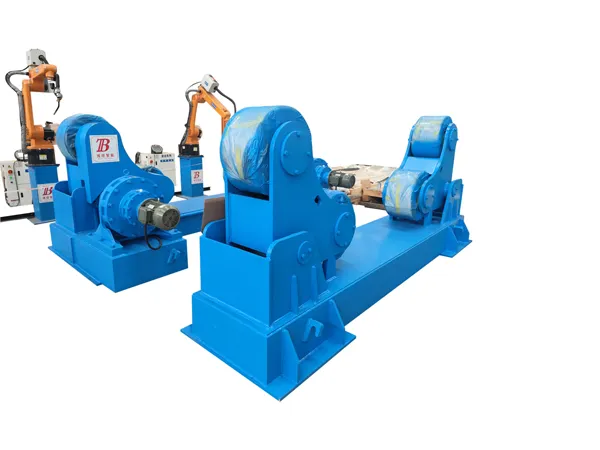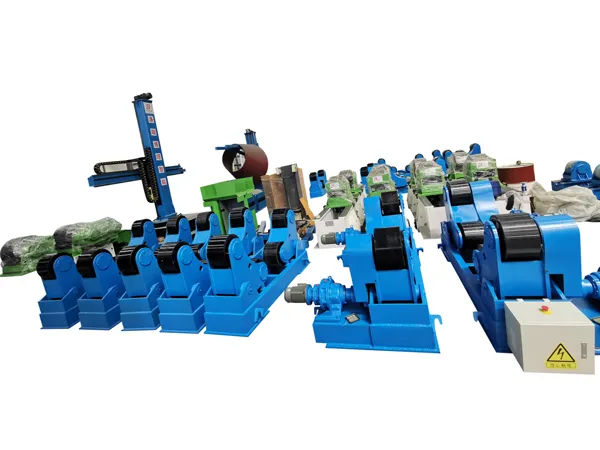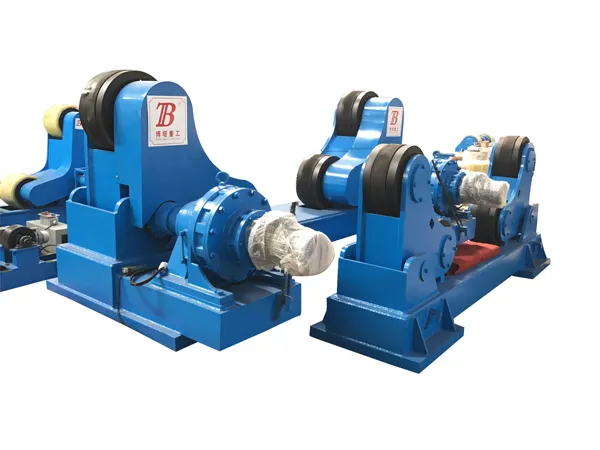Welding rotators play a crucial role in improving welding efficiency and precision, especially in handling cylindrical workpieces. Proper maintenance of your welding rotator can significantly extend its lifespan, reduce downtime, and enhance operational safety. Here are some essential maintenance tips to ensure long-term reliability and performance.To extend the life of your welding rotator and ensure its reliable operation, follow these maintenance tips.

Visual Inspection: Before each use, visually inspect the rotator for any signs of damage, such as cracks, loose bolts, worn rollers, or damaged wiring.
Cleanliness: Keep the rotator clean from weld spatter, dust, dirt, and grease. Use a wire brush, scraper, or appropriate cleaning solvents (check manufacturer's recommendations) to remove debris. Pay special attention to rollers, bearings, and contact surfaces. Excessive spatter can damage rollers and cause uneven rotation.
Follow Manufacturer's Instructions: The manufacturer's manual will specify the proper lubrication points, the type of lubricant to use (e.g., grease, oil), and the frequency of lubrication. Adhere to these guidelines.
Lubricate Rollers and Bearings: Apply lubricant to the roller bearings and any other moving parts, such as gears or drive shafts. Ensure the lubricant is appropriate for the operating temperature and load.
Avoid Over-Lubrication: Over-lubrication can attract dirt and debris, so apply lubricant sparingly and wipe away any excess.
Check Wiring and Connections: Regularly inspect wiring for damage, fraying, or loose connections. Repair or replace any damaged wiring immediately. Ensure all electrical connections are tight and corrosion-free.
Motor and Gearbox: Inspect the motor and gearbox for any signs of overheating, unusual noises, or vibrations. If present, consult a qualified technician for repair.
Periodically check the oil level in the gearbox (if applicable) and replenish as needed.
Control Panel: Ensure the control panel is clean and free from moisture. Check the functionality of all buttons, switches, and displays.
Roller Alignment: Ensure that the rollers are properly aligned to prevent uneven wear and stress. Misalignment can lead to premature failure of the rollers and bearings.
Roller Condition: Regularly check the condition of the rollers for wear, pitting, or flat spots. Replace worn or damaged rollers promptly.
Bearing Replacement: Listen for unusual noises from the bearings. If bearings are worn or damaged, replace them immediately. Use quality bearings that meet the manufacturer's specifications.

Chain and Sprocket (if applicable): If the rotator uses a chain drive, inspect the chain for wear, looseness, and proper lubrication. Adjust the chain tension as needed. Ensure the sprockets are in good condition and properly aligned.
Gearbox (if applicable): Inspect the gearbox for leaks, unusual noises, or vibrations. Check the oil level regularly and change the oil according to the manufacturer's recommendations.
Drive System: Inspect the drive system (motor, gearbox, chain, etc.) for any signs of wear or damage. Tighten any loose bolts or screws.
Do Not Exceed Load Capacity: Never exceed the rotator's maximum load capacity. Overloading can damage the rotator and create a safety hazard.
Proper Load Distribution: Ensure that the workpiece is properly centered on the rotator to distribute the load evenly. Uneven load distribution can cause excessive stress on the rollers and bearings.
Gentle Operation: Avoid sudden starts, stops, and changes in speed. Operate the rotator smoothly and gradually.
Clean Before Storage: Clean the rotator thoroughly before storing it.
Cover and Protect: Cover the rotator with a protective cover to prevent dust, dirt, and moisture from accumulating.
Store in a Dry Place: Store the rotator in a dry, well-ventilated place to prevent rust and corrosion.

Develop a Schedule: Create a preventative maintenance schedule that includes regular inspections, lubrication, and component checks.
Keep Records: Maintain records of all maintenance performed, including dates, procedures, and any parts replaced. This will help you track the rotator's condition and identify potential problems early on.
Regular Inspection: Schedule regular inspections by a qualified technician to identify any potential problems that may not be apparent during routine maintenance.
Professional Repairs: For major repairs or complex issues, consult a qualified technician with experience in welding rotator maintenance.
By following these maintenance tips, you can significantly extend the life of your welding rotator, reduce downtime, and ensure safe and reliable operation. Always refer to the manufacturer's manual for specific maintenance instructions and recommendations.
No. 1 Intersection of Chuangye Avenue and Weilai Avenue,
Yiyang County,Luoyang City, Henan Province, China
+86 400-0379-069
Copyright © 2023 An Automated Welding and Cutting Equipment Manufacturer Focusing on Welding Column Boom and Welding Rotator | All Rights Reserved Technical support: ShangXian